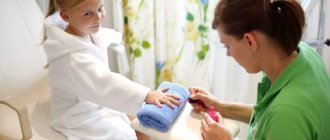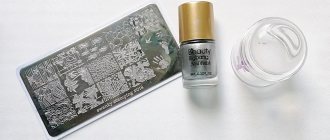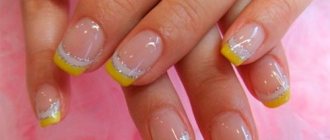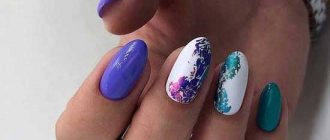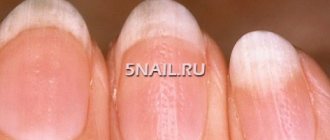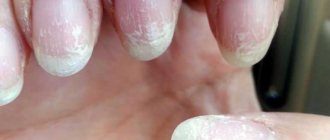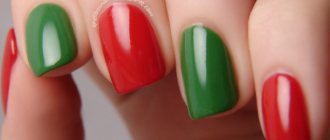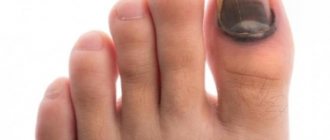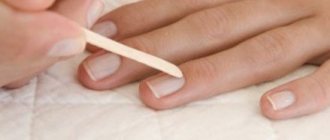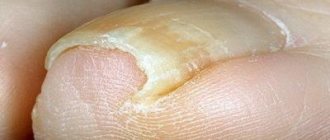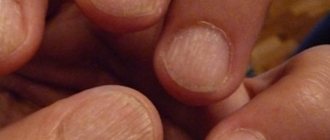(1 ratings, average: 5,00 out of 5)
Home » Fungal diseases
As Oscar Wilde once said: “The best way to make good children is to make them happy.” Every parent knows that this is not so simple, because for this they need not only to provide their children with toys or food, but also to be able to protect them from the troubles that the modern world has in store. First of all, these are diseases. One of them will be discussed in this article.
Peeling nails in children is a common problem. This phenomenon is also diagnosed in any person, regardless of gender or age. There are a number of reasons for this.
Causes of detachment
First of all, the factor that causes a child’s nails to peel may be his lifestyle. No one will argue that every little person loves to learn something new through trial and error, injuring himself. This can range from a simple blow to self-harm in the form of a bad habit of biting nails.
If the second leads to a deterioration in appetite, sleep disturbances and nervous system, this should seriously worry the parent, since the baby is experiencing stress and fear. A conversation with him can not only clarify the situation, but also prevent the occurrence of a number of unpleasant complications. If the nail plate in children splits after injury from a blow, this goes away after a new one grows.
- Nutrition also plays a very important role. In case of hypovitaminosis, the child’s nails peel from the cuticle. This happens when a small organism needs a large amount of vitamins and microelements - iron and calcium - for full development and growth. In addition, you can observe pigmentation of the nail plate, which becomes yellow, gray or covered with white spots.
- Detachment of the nail plate on a child’s hands is mainly caused by a fungal infection. Deformation and pigmentation appear at the site of the lesion. The child’s nails peel at the base, along the edges, in the center, near the cuticle. Onychomycosis in a child (fungal infection) occurs due to tight shoes or poor personal hygiene. The disease is shown in the photo below.
- The baby’s nails also peel due to internal disorders, diseases of organs and systems. For example, chronic or advanced diseases. If a child has peeling toenails, this indicates anemia or pathologies of the adrenal glands.
Diagnostics
To diagnose and treat the disease, you must visit a dermatologist. If the doctor discovers specific causes for the development of onycholysis, the patient may be referred for further examination to other specialists: an endocrinologist, a gastroenterologist, an allergist.
Be sure to read:
How to get rid of dry and cracked heels
It is very important to determine the cause of the disease. To do this, the affected nails are examined and the patient’s complaints are listened to. Tests are prescribed to identify the causative agent of the infection. A general blood test may be prescribed to evaluate the functioning of the body as a whole and identify a possible inflammatory process. Instrumental diagnostics when the nail detaches from the nail bed is rarely carried out, depending on the expected cause of the detachment.
Onycholysis code according to ICD-10: L60.1
What to do
Mechanical damage
If a child actively chews his nails, the parent should help him get rid of this habit. To do this, it is worth finding out about its reasons. Perhaps the baby is very worried about something, but for some reason does not want or is afraid to admit it to an adult, and keeps it to himself.
A dialogue with him will help him not only get rid of what has been bothering him for a long time, but will also ensure trust on his part. If children accidentally injure themselves, then it is worth talking to them and explaining that they should not do this, because they are harming their health. A bruise under the nail is also considered mechanical.
Hypovitaminosis
First of all, it is important to deal with the source of the problem. To do this, you will need to replenish the amount of iron and calcium in the little one’s body.
This can be done by including in your diet some foods that are rich in these microelements:
- Dairy
- White beans
- Salmon
- Sardines
- Figs
- Cabbage
- Almond
- Citrus
- Soy milk
- Beans
- Hazelnuts
- Oatmeal
- Dried apricots
- Prunes
- Eggs
- Cereals
- Meat
Fungal infection
If onychomycosis is a concern, you need to determine the cause. It could be:
- Tight shoes
- Reaction to contact with chemicals
- Allergy
- Manifestation of dermatitis or eczema
- Anatomical features of the structure
- Circulatory disorders
It is known that a healthy immune system can resist most fungi that surround a person, so the main task is to strengthen it and avoid stress. In addition to the separation of the nail plate, you can notice an inflammatory process on the skin and fungus.
First of all, it is important to deal with the infection itself. They prescribe a special diet that strengthens his immunity. General diagnostics are carried out to find and eliminate diseases of the internal organs. It is also recommended to use antifungal ointments.
Diseases of internal organs
This phenomenon is caused by the reaction of the autonomic nervous system. To eliminate the problem and recover, an examination is carried out to identify any disturbances in the functioning of the internal organs. Throughout the entire period of treatment, the immune system is strengthened with the help of physical activity, vitamins and following the recommendations of a specialist. Only after all the problems have been eliminated will the discomfort stop bothering you.
What to do first? Of course, it is necessary to consult a doctor after the first symptoms are noticed and not to self-medicate, otherwise this will lead to complications. This can harm your health and affect the treatment process.
After the treatment has been successful and the detachment has ceased to bother children and parents, you can begin to restore them. This will not only not damage the integrity, but will also help strengthen the plate.
The methods are suitable both when a child has peeling fingernails and when the lesion is on the feet.
- For the first method, you will need two capsules: with vitamins A and E. They are available to everyone and are available without a prescription. They need to be pierced or made a small cut, and then pour the liquid into a small bowl, cup or other container. Rub this oil in twice a day. The result will be noticeable within a week or two.
- The second method involves the use of iodine. So that the pigment does not confuse anyone in everyday life, it is better to apply it before bed so that the color disappears overnight. You can also make small baths from it and hold your hands in them for about twenty minutes.
- Baths can also be made with the addition of lemon juice. To do this you will need four liters of juice and half a fresh lemon. It is better to hold your hands for fifteen minutes. The plates not only become stronger, but also cleaner and whiter.
- If a fungal infection is observed, treatment should be carried out exclusively by a specialist, otherwise it can harm your health. In addition, the effect will be small, and the risk of spreading the infection will be huge. If the choice falls on treating your baby at home, it is better to consult a dermatologist. Perhaps he will offer his own alternative, ointments and much more.
If you can’t explain to your baby that gnawing is not a very good habit, you can resort to more radical, but humane actions. There are special varnishes with a bitter taste. The baby will no longer want to put his fingers in his mouth.
If he is stressed, it is best to contact a child psychologist who can help him cope with the problem.
Nutrition to improve nails
It is best to create a baby’s menu by adding sufficient amounts of proteins, fats and carbohydrates, as well as vitamins found in fruits and vegetables.
Recommended:
- Tofu cheese
- Broccoli
- Cottage cheese
- Dairy products
- Cereals
- Celery
- Almond
- Dried fruits
- Fish
- Eggs
- Soy
Medications
- Ointments: Azole, Allylamine.
- Creams: Exoderil, Lamisil, Terbinafine, Mikozan, Candide.
Parents' attention plays a role in the child's health. Detachment due to gnawing indicates problems in the life of a little person that are important to solve together with him. To prevent fungal infection, shoes are selected taking into account both preferences and walking comfort. Important aspects It is better to discuss dosage and administration directly with your doctor.
If the baby says that he feels discomfort, they should be changed, and not wait until the shoes wear out. If you go to the pool, it is worth explaining the rules of hygiene, why it is important to wear slippers, and so on. This will protect you from both fungal infections and other diseases.
Treatment is carried out under the supervision of a dermatologist. After the first symptoms appear, you must consult a doctor. He will conduct an examination and collect tests to determine the root cause of the disease. If the choice was to self-medicate, a consultation will not be superfluous, because only then is it possible to correct mistakes, and, therefore, learn a life lesson.
We must not forget about nutrition, which is of enormous importance not only in the treatment of hypovitaminosis, onychomycosis or other problems. A proper diet guarantees the health of internal organs and well-being.
Why do toenails peel off in adults: causes and treatment
- Causes of peeling nails
- Peeling of the plate due to injury
- Help with peeling due to fungus
- Treatment of nail fungus
Have you been trying to cure FUNGUS for many years?
Head of the Institute: “You will be amazed at how easy it is to cure fungus by taking it every day...
Read more "
A person may experience various discomforts or pain when walking. This may be due to uncomfortable or small shoes, scuffs on the feet, or if the feet or toes are injured. If in ordinary cases healing occurs quickly and without consequences, then the toenail comes off, as a rule, due to illness or severe bruises and injuries.
Causes of peeling nails
To understand this problem, it is necessary to identify the reason why your toenails come off.
Main reasons:
- bruises or injuries to the legs and fingers;
- uncomfortable, tight shoes;
- diseases of the feet and skin (fungus, psoriasis, dermatitis);
- impaired blood flow in the extremities;
- contact with various chemicals.
Predisposing reasons for toenail peeling can be: stress, decreased immunity, vitamin deficiency, and poor hygiene.
Most often, toenails peel off due to bruises, injuries and foot fungus. To understand how to act in a particular case, you need to figure out why your toenail comes off due to a bruise or fungus.
Peeling of the plate due to injury
Bruises and injuries come in different forms; most often, your leg or fingers can be injured on furniture in the house. The most vulnerable places are the little fingers and big toes.
A person may be concerned about:
- aching pain in the finger;
- redness around the injured area;
- pain when walking;
- bruising around the nail;
- edema.
The big toe will take longer to heal than the rest.
Gradually, as the pain subsides, the plate may first turn blue, then turn black, but this does not mean that the toenail will come off. Perhaps a person walks around with a blue finger for some time, and gradually the blueness will subside. If the injury is serious and the nail plate is raised, then this is a clear sign that the nail on the big toe will soon come off. In this case, a person may feel an interfering, foreign body on the finger.
You need to let the nail go away on its own, without tearing it off, so healing will happen faster, otherwise you will have to heal the open wound under the plate, which will take even longer to heal.
If your toenail comes off, you will have to be more careful when walking at first. What to do if your toenail comes off? All further actions to provide therapeutic measures will be as follows:
- treat the nail surface with any antiseptic (if necessary, cover the area around the nail with iodine or brilliant green);
- glue a bactericidal patch (this way the bed of the plate will be protected from rubbing with socks and shoes);
- try to wear shoes less;
- do not squeeze or strain the sore finger;
- if pain is present, take any analgesic;
- be barefoot more (this way the wound will dry out faster and the feeling of discomfort will go away).
Soon, in place of the old plate that came off, a new one will begin to grow, the main thing at this stage is to prevent re-injury of the finger, and also to prevent the nail plate from growing into the skin. To prevent this, you need to lubricate the nail bed with sea buckthorn oil 2 times a day, so the skin will not dry out and a new plate will not grow in.
Help with peeling due to fungus
Foot fungus is an insidious disease that affects people who frequently visit public places - swimming pools, baths, saunas, showers. Despite treating such areas with chlorine solution, the risk of infection is very high. The fungus can also be transmitted by using other people's hygiene items or from sick animals.
It develops slowly and asymptomatically; a person may not even be aware of his illness until he sees the characteristic signs of this disease.
Signs of fungus on fingers:
- the presence of hangnails in the finger area;
- constant peeling of the skin of the fingers;
- separation of the nail plates;
- pale skin;
- formation of crumbs on the nail surface;
- formation of white spots under the nail;
- suppuration under the nail plate (in severe forms);
- unpleasant smell.
A severe and advanced form of the fungus can cause the toenail to peel off. In such a situation, it is better to consult a doctor for help, since a severe course of the disease can lead to numerous complications. Perhaps the doctor will advise you to take tests to identify the cause of the fungal disease and prescribe antibacterial drugs to prevent infection of other areas of the skin.
With a fungal disease, the plate may begin to fall off in parts, starting from the top edge and gradually approaching the root of the nail surface. In such a situation, you can only wait until the entire nail falls off, and only then begin treating the fingers.
If the nail plate falls out, the use of a patch is unacceptable, since the closed surface of the nail bed can lead to further proliferation of harmful bacteria and the treatment process will be delayed.
Treatment of nail fungus
It is necessary to treat a finger for fungus before a new nail plate appears, otherwise the fresh nail will also be infected.

